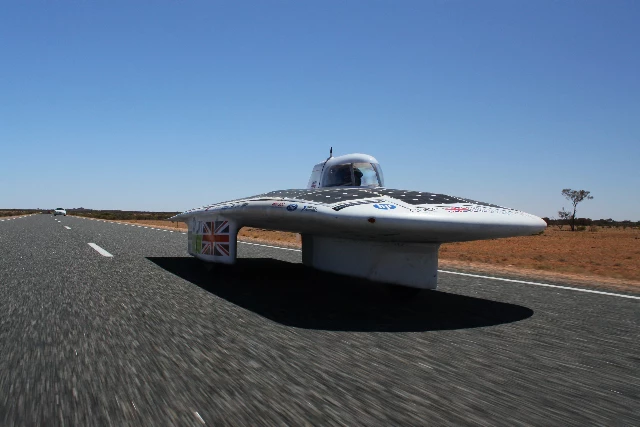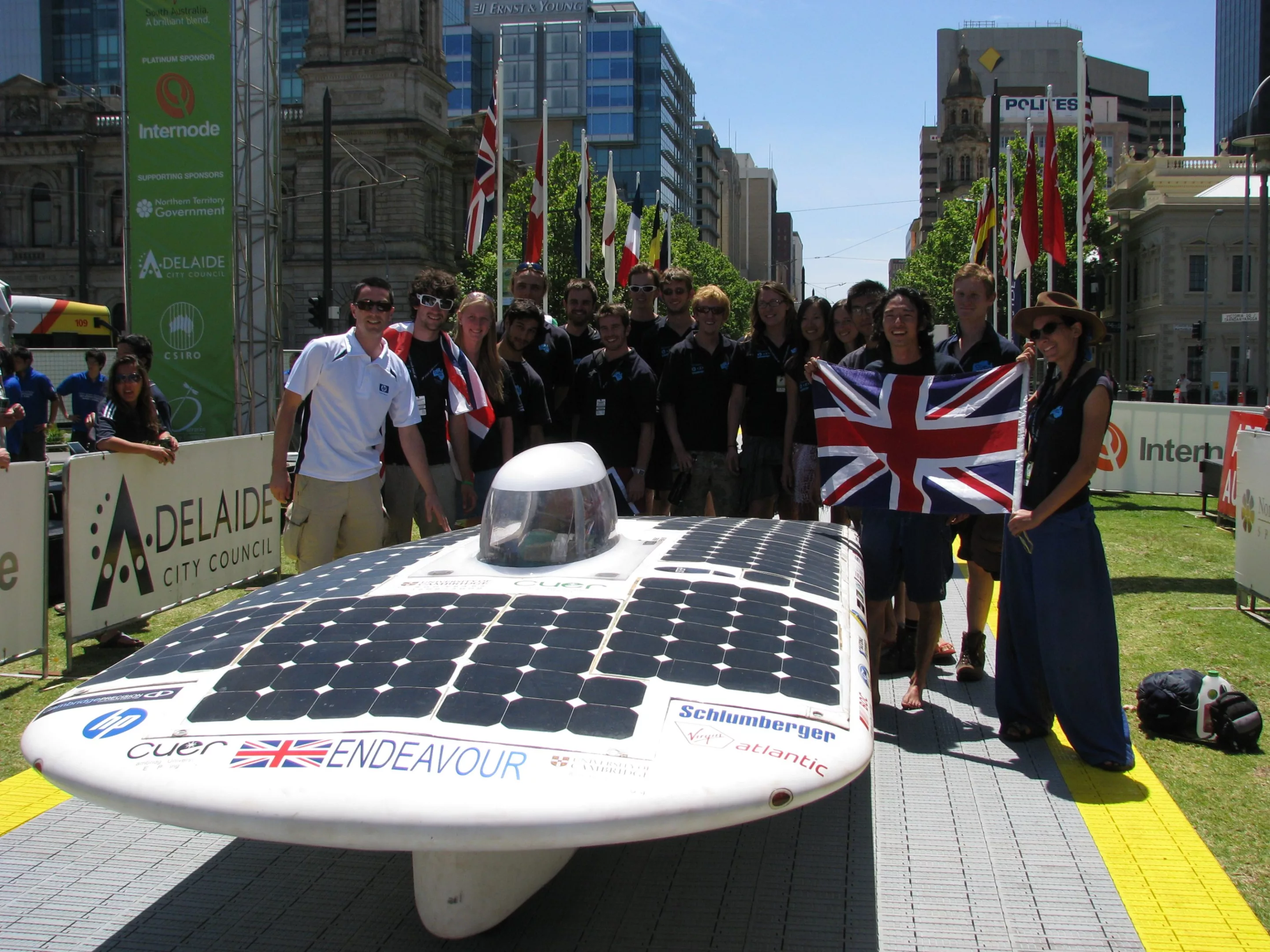The biennial World Solar Challenge is the oldest and most high profile solar car race in the world, a grueling test of endurance and innovative engineering that sees teams take part in an epic 1800 mile race across the Australian outback. In 2009, the Cambridge University team placed 14th with its Bethany solar powered vehicle after being let down by a bad battery. Now, they're almost ready to make their comeback for the October race with an updated version of Bethany - the Endeavour.
The race, which first began back in 1987, runs from Darwin to Adelaide and attracts dozens of teams from around the world, the majority from the world's best universities and technical colleges. The 2009 champions - Japan's Tokai Challenger - finished the race in 29 hours, 49 minutes at an average speed of 63 mph. This year's race has had an unprecedented number of initial entries with 40 teams from 20 countries seeking to qualify.
The Cambridge team are now wrapping up preparations for another shot at the prize with Endeavour, a sleek aluminum framed, carbon-fiber three-wheeler notable for its unusual one at the front and two at the rear configuration.
"We thought it would make it more aerodynamically efficient having one wheel at the front" Alisdair McClymont, from the Cambridge team told Wired Magazine. "We're not convinced that was the right decision to make. But we don't think it will make that big a difference."
Rather than design an entirely new vehicle for this year's race, the Cambridge team used their experience garnered from Bethany to create a new, refined version. To improve the car's reliability, they have replaced the 5-kilowatt-hour lithium-polymer batter pack with a 4-kilowatt-hour lithium-iron phosphate unit.

Not quite six feet wide and almost 16 feet long, Endeavour is covered in a 64.5 square feet of silicon solar cells that generate as much as 1.3 kilowatts. This is enough to keep the car cruising at 43 mph for a full day, with the battery there to provide extra power if needed. The car, which weighs around 485 pounds without the driver and has a maximum speed of around 75 mph.
The vehicles that compete in the World Solar Challenge may look weird, but the technological developments behind what are basically very efficient electric cars will likely find their way into our garages in the future. Intel has contributed the computing power needed to run the fluid dynamics and other design simulations and Intel Atom processors feature in the car's on-board electronics. With an interior that can reach 130 degrees or more, and high vibration level of the vehicle, they believe it's a good test of the technology.
The key to success in the race comes down to a well-considered strategy, close reading of the weather and efficient balance of energy and power consumption. Each team has at least two drivers who perform four-hour shifts and driving time is between 8am and 5pm. Cambridge drivers will undergo months of training to cope with the intense heat of the Australian sun and unique seating position.
Beyond hoping to win this year's race, and like most other contenders, the Cambridge team are keen to capture the imagination of the public with their ideas and to drive positive change towards a low carbon future.
The Cambridge University Eco Racing team discusses the challenge of crossing Australia on solar power in the video below.
For more info see the World Solar Challenge.


















